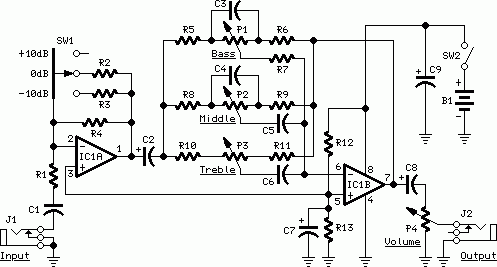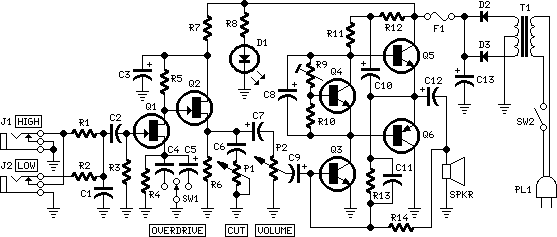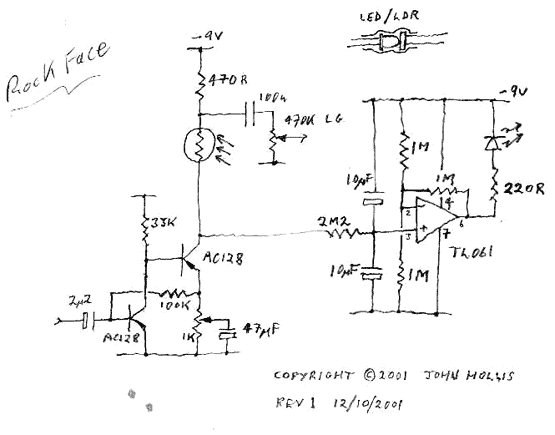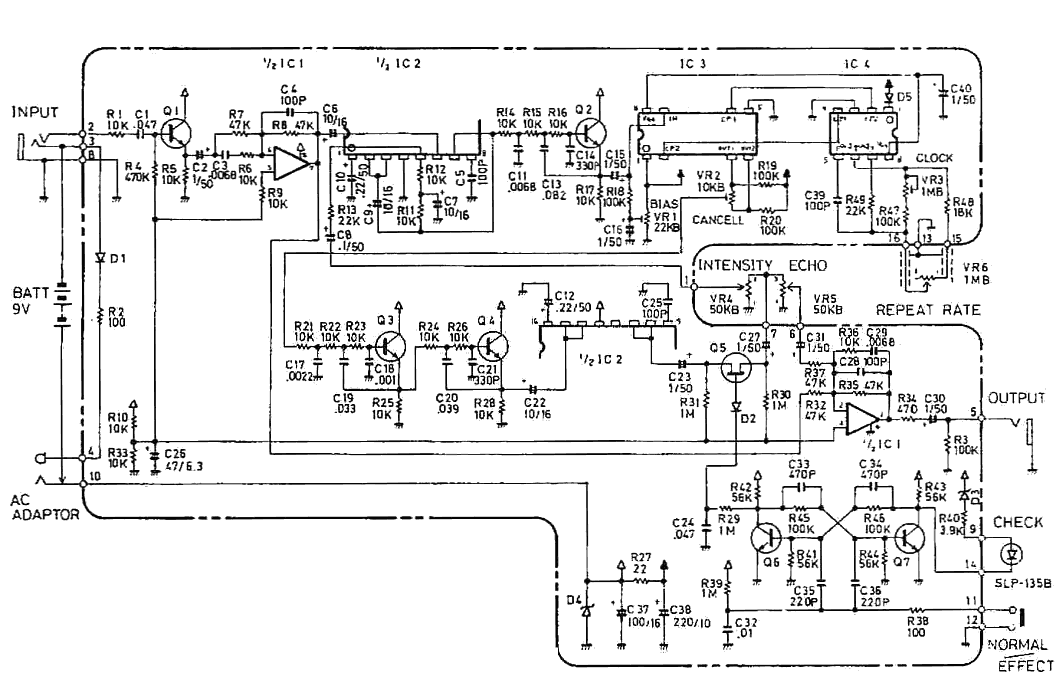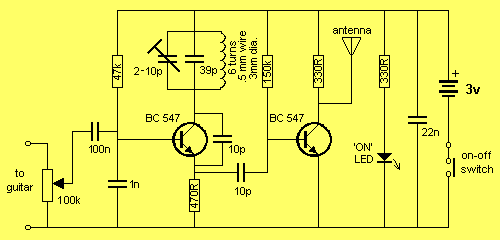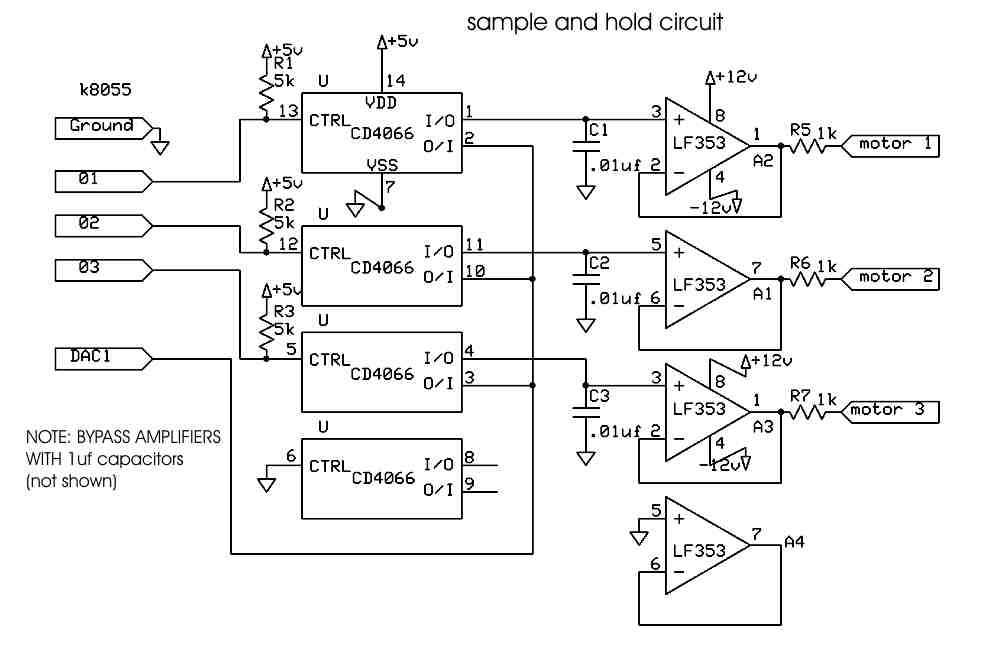
Rastop guitar effects
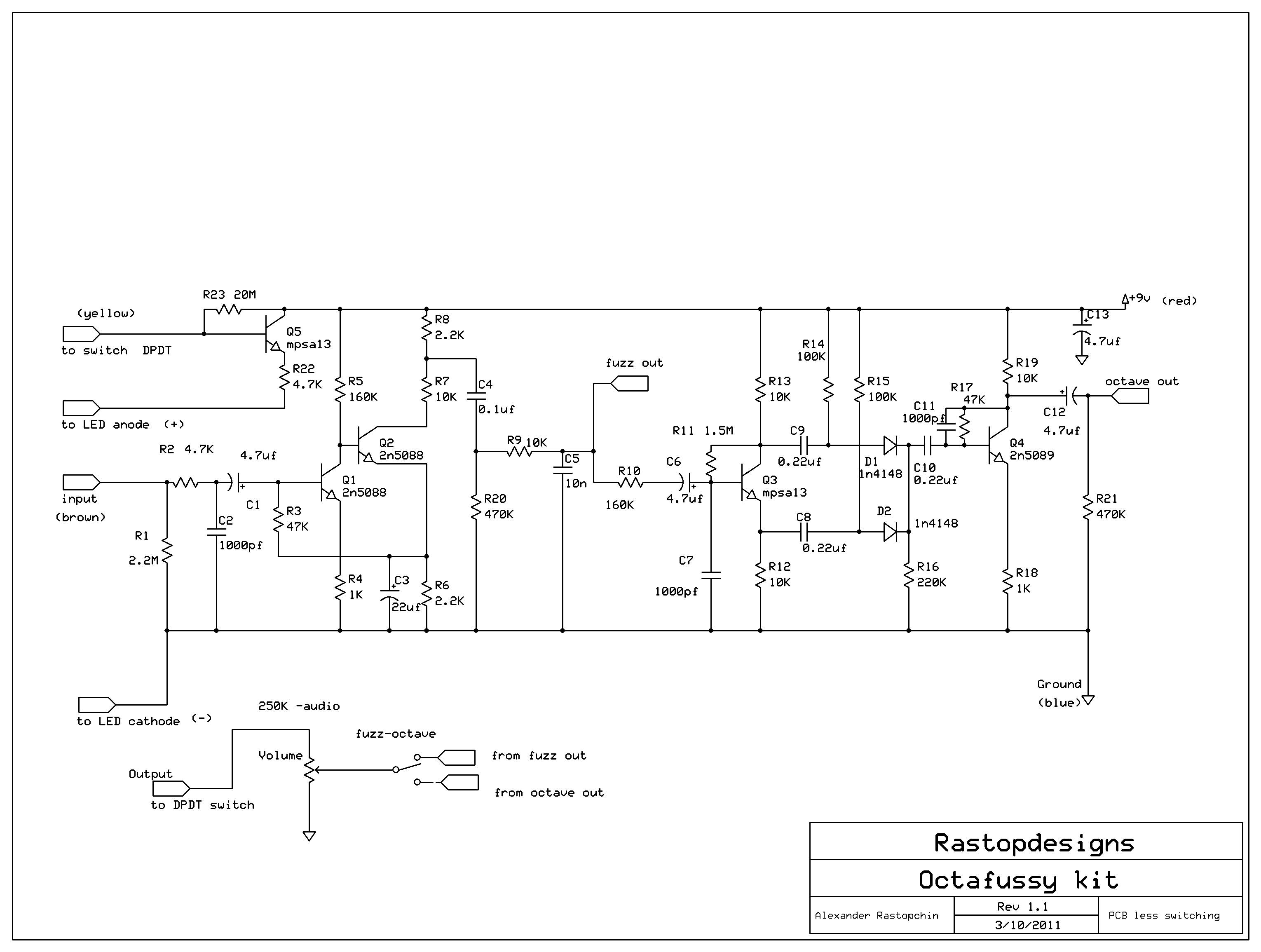
After testing various circuits, the simplest design was developed, characterized by minimal parts count and straightforward signal flow, reminiscent of "Heathkits." This design features a single tone control and an FET buffer. Modern elements include True Bypass switching, a DC jack, and an LED indicator, while omitting noise reduction. The basic model includes Volume and Tone controls, with gain set to maximum, allowing for effective cleaning with the guitar's volume control. Additionally, an extra Gain control is available for those who prefer footswitchable presets instead of an onboard volume knob. The design integrates several concepts: it draws tonal inspiration from the tweed Bassman, features a six-position varitone influenced by an old B.C. Rich Eagle guitar, and incorporates an inductor coil for tone shaping. The treble booster section is derived from the Dallas Rangemaster. The circuit includes three switchable gain settings—low (for humbuckers), medium, and high. The varitone rotary switch functions as a selectable frequency mid-cut filter, effectively emulating the Fender scooped-mids sound. The input impedance resembles that of a tube stage, while the output is less than 10K. Control components consist of Volume, Treble (with full counterclockwise being normal and clockwise boosting highs), a 6-position rotary Varitone switch with settings for tone bypass, lo-mid cut, mid cut, hi-mid cut, low cut, and highest gain (fuzz), along with a mini switch for high/low gain.
The circuit design emphasizes simplicity and effectiveness, utilizing a minimalistic approach that enhances user experience while maintaining versatility. The FET buffer serves to preserve signal integrity and reduce loading effects on the guitar pickups, ensuring that the tonal characteristics remain intact. The True Bypass switching mechanism is crucial for maintaining signal clarity when the effect is not engaged, allowing for seamless integration into any pedalboard setup.
The six-position varitone switch is a standout feature, enabling users to sculpt their sound with precision. Each setting provides a distinct tonal character, making it suitable for various musical styles. The integration of an inductor coil for tone shaping is a nod to vintage designs, offering a warm and rich tonal palette that appeals to guitarists seeking classic sounds.
The gain settings enhance the circuit's adaptability, accommodating different pickup types and playing styles. The low gain setting is particularly effective for humbuckers, providing a smooth and creamy overdrive, while the medium and high settings cater to more aggressive playing styles, allowing for a wide range of distortion characteristics.
Overall, this circuit design reflects a thoughtful combination of vintage inspiration and modern functionality, making it a valuable addition to any guitarist's toolkit. The attention to detail in the control layout and tonal shaping options ensures that users can achieve their desired sound with ease, whether performing live or recording in the studio.By testing many different circuits, I ended up with the simplest ( in terms of parts count and straight signal flow) design, similar to those " Heathkits", with one tone control and FET buffer. From modern features - only True By-Pass switching, DC jack and LED indicator included, no noise reduction, etc.
Basic model has Volume and Tone controls, gain set to maximum. It cleans up good enough with guitar volume control, but additional Gain control is available too, for those who prefer footswitchable presets to on-board volume knob. This beauty comes from combining several ideas - soundwise it was tweed Bassman("Tweedy"- is the first box with real tweed cover), six position varitone was inspired by old B.
C. Rich Eagle guitar I played back in 1985, and uses inductor coil for tone shaping, treble booster part comes from mysterious Dallas Rangemaster. On top of everything it has three switchable gain settings - low (for humbuckers), medium and high. Varitone rotary switch acts as a select frequency mid-cut filter, which successfully emulates Fender scooped-mids sound.
Input impedance is similar to a tube stage, output- less than 10K. Controls: Volume, Treble( full CCW is normal, going CW boosts highs), 6-position rotary Varitone switch: 1-tone by passed; 2- lo-mid cut; 3- mid cut; 4- hi-mid cut; 5- low cut; 6- highest gain(fuzz), mini switch- hi/low gain. I was fooling around with dividers since late seventies. At that time CMOS chips were not available, s 🔗 External reference
The circuit design emphasizes simplicity and effectiveness, utilizing a minimalistic approach that enhances user experience while maintaining versatility. The FET buffer serves to preserve signal integrity and reduce loading effects on the guitar pickups, ensuring that the tonal characteristics remain intact. The True Bypass switching mechanism is crucial for maintaining signal clarity when the effect is not engaged, allowing for seamless integration into any pedalboard setup.
The six-position varitone switch is a standout feature, enabling users to sculpt their sound with precision. Each setting provides a distinct tonal character, making it suitable for various musical styles. The integration of an inductor coil for tone shaping is a nod to vintage designs, offering a warm and rich tonal palette that appeals to guitarists seeking classic sounds.
The gain settings enhance the circuit's adaptability, accommodating different pickup types and playing styles. The low gain setting is particularly effective for humbuckers, providing a smooth and creamy overdrive, while the medium and high settings cater to more aggressive playing styles, allowing for a wide range of distortion characteristics.
Overall, this circuit design reflects a thoughtful combination of vintage inspiration and modern functionality, making it a valuable addition to any guitarist's toolkit. The attention to detail in the control layout and tonal shaping options ensures that users can achieve their desired sound with ease, whether performing live or recording in the studio.By testing many different circuits, I ended up with the simplest ( in terms of parts count and straight signal flow) design, similar to those " Heathkits", with one tone control and FET buffer. From modern features - only True By-Pass switching, DC jack and LED indicator included, no noise reduction, etc.
Basic model has Volume and Tone controls, gain set to maximum. It cleans up good enough with guitar volume control, but additional Gain control is available too, for those who prefer footswitchable presets to on-board volume knob. This beauty comes from combining several ideas - soundwise it was tweed Bassman("Tweedy"- is the first box with real tweed cover), six position varitone was inspired by old B.
C. Rich Eagle guitar I played back in 1985, and uses inductor coil for tone shaping, treble booster part comes from mysterious Dallas Rangemaster. On top of everything it has three switchable gain settings - low (for humbuckers), medium and high. Varitone rotary switch acts as a select frequency mid-cut filter, which successfully emulates Fender scooped-mids sound.
Input impedance is similar to a tube stage, output- less than 10K. Controls: Volume, Treble( full CCW is normal, going CW boosts highs), 6-position rotary Varitone switch: 1-tone by passed; 2- lo-mid cut; 3- mid cut; 4- hi-mid cut; 5- low cut; 6- highest gain(fuzz), mini switch- hi/low gain. I was fooling around with dividers since late seventies. At that time CMOS chips were not available, s 🔗 External reference
